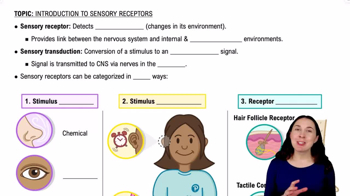The genitofemoral, femoral, and lateral femoral cutaneous nerves are major nerves of the
(a) Lumbar plexus
(b) Sacral plexus
(c) Brachial plexus
(d) Cervical plexus
 Verified step by step guidance
Verified step by step guidance Verified video answer for a similar problem:
Verified video answer for a similar problem:



 3:33m
3:33mMaster Peripheral Nervous System with a bite sized video explanation from Bruce Bryan
Start learning